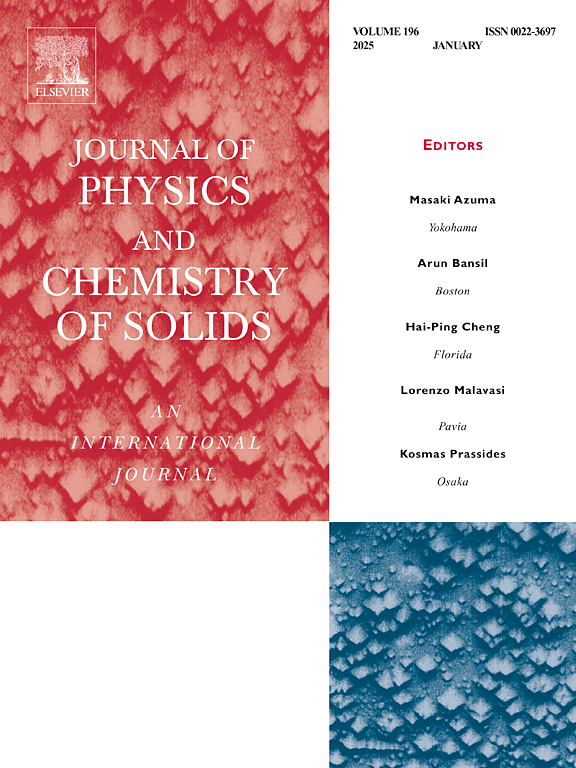Investigation of bismuth doping effect on electrical and thermal properties of n-type PbSnS2
IF 4.3
3区 材料科学
Q2 CHEMISTRY, MULTIDISCIPLINARY
引用次数: 0
Abstract
In this work, we have studied the influence of bismuth on thermoelectric properties of (0 x 0.1). It was demonstrated that the addition of bismuth significantly increases electrical conductivity from 83.5 to 1407 at 750 K. The maximum thermoelectric figure of merit was achieved at 750 K. Furthermore, the mechanisms underlying these improvements were described through density functional theory (DFT) calculations. Our results indicate that the increase in electrical conductivity is linked to modifications in the electronic structure. This study highlights the potential of as an effective thermoelectric material and provides insights into optimizing its properties through strategic doping.

求助全文
约1分钟内获得全文
求助全文
来源期刊
CiteScore
7.80
自引率
2.50%
发文量
605
审稿时长
40 days
期刊介绍:
The Journal of Physics and Chemistry of Solids is a well-established international medium for publication of archival research in condensed matter and materials sciences. Areas of interest broadly include experimental and theoretical research on electronic, magnetic, spectroscopic and structural properties as well as the statistical mechanics and thermodynamics of materials. The focus is on gaining physical and chemical insight into the properties and potential applications of condensed matter systems.
Within the broad scope of the journal, beyond regular contributions, the editors have identified submissions in the following areas of physics and chemistry of solids to be of special current interest to the journal:
Low-dimensional systems
Exotic states of quantum electron matter including topological phases
Energy conversion and storage
Interfaces, nanoparticles and catalysts.

 求助内容:
求助内容: 应助结果提醒方式:
应助结果提醒方式:


